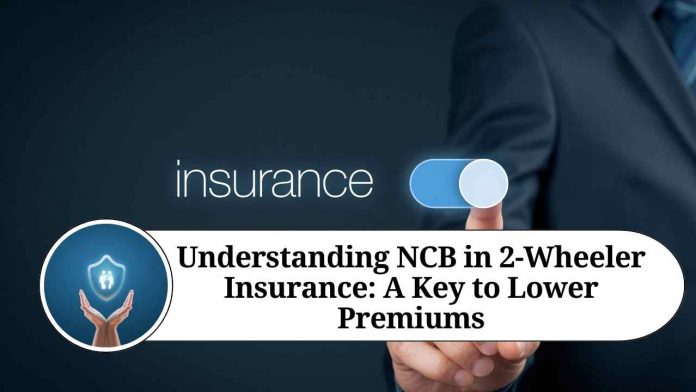When it comes to insuring your two-wheeler, there are various factors to consider, and one of the most crucial aspects is the No Claim Bonus (NCB). NCB is a reward system provided by insurance companies to policyholders who do not file any claims during their policy term. This concept plays a significant role in reducing insurance premiums and encouraging safe riding practices. In this blog, we will delve into the details of NCB in 2-wheeler insurance and explore how it can benefit you as a policyholder.
What is NCB?
No Claim Bonus (NCB) is a discount or a bonus provided by insurance companies to policyholders who have not made any claims in a particular policy year. It acts as an incentive for safe riding behavior and encourages policyholders to be cautious on the road. NCB can be accumulated over the years and can lead to substantial savings on insurance premiums.
How does NCB work?
The NCB is calculated as a percentage of the own damage premium, which is the portion of the premium that covers damages to your vehicle. The percentage of NCB increases with each claim-free year and typically ranges from 20% to 50%. Here’s a general breakdown of the NCB percentage scale:
- 1 claim-free year: 20% NCB
- 2 consecutive claim-free years: 25% NCB
- 3 consecutive claim-free years: 35% NCB
- 4 consecutive claim-free years: 45% NCB
- 5 or more consecutive claim-free years: 50% NCB
It’s important to note that NCB is associated with the policyholder and not the insured vehicle. Therefore, if you sell your two-wheeler and purchase a new one, you can transfer your NCB to the new vehicle. This transferability makes NCB a valuable asset for policyholders and encourages them to maintain continuous insurance coverage.
Benefits of NCB:
Reduced premiums: The primary benefit of NCB is the reduction in insurance premiums. As the NCB percentage increases, so does the discount on the own damage premium. This can result in significant savings over time, especially for policyholders with a long history of claim-free years.
Encourages safe riding behavior: NCB acts as an incentive for policyholders to ride cautiously and avoid accidents. By rewarding claim-free years, insurance companies promote responsible riding practices and aim to reduce the number of accidents on the road.
Transferability: As mentioned earlier, NCB is not tied to a specific vehicle but to the policyholder. This means that if you switch your two-wheeler or purchase a new one, you can transfer the accumulated NCB to the new policy, ensuring continued benefits and savings.
Add-on protection: Many insurance companies offer add-on features that protect your NCB even if you make a small claim. These add-ons prevent the loss of NCB entirely or ensure a reduced impact on the accumulated percentage.
Conclusion
No Claim Bonus (NCB) is an essential component of 2-wheeler insurance, offering policyholders a tangible reward for safe riding practices and responsible behavior on the road. By accumulating NCB over the years, you can significantly lower your insurance premiums, resulting in long-term savings. Remember to maintain continuous coverage and take advantage of the transferability of NCB when you purchase a new vehicle. Embrace safe riding habits, and let NCB be your ally in securing affordable two-wheeler insurance.
Read more useful content:
FAQs on NCB in 2-Wheeler Insurance:
Q1: What does NCB stand for in 2-wheeler insurance?
A1: NCB stands for No Claim Bonus.
Q2: How is NCB calculated in 2-wheeler insurance?
A2: NCB is calculated as a percentage of the own damage premium. The percentage increases with each claim-free year, ranging from 20% to 50%.
Q3: Can NCB be transferred to a new 2-wheeler insurance policy?
A3: Yes, NCB can be transferred to a new policy when you purchase a new two-wheeler. It is associated with the policyholder and not the insured vehicle.
Q4: Is NCB applicable for third-party claims?
A4: No, NCB is applicable only for own damage claims. It is a discount on the premium for damages to your vehicle and does not apply to third-party liability claims.
Q5: How can I avail the NCB benefit?
A5: To avail of the NCB benefit, you need to ensure that you do not file any claims during your policy term. If you have a claim-free year, the insurance company will offer a discount on your next year’s premium.
Q6: What happens to my NCB if I sell my 2-wheeler?
A6: If you sell your two-wheeler and purchase a new one, you can transfer your accumulated NCB to the new vehicle. The NCB is associated with the policyholder, allowing you to retain the benefit.
Q7: Is NCB applicable if I switch insurance companies?
A7: Yes, NCB is applicable even if you switch insurance companies. You can request your previous insurer to provide an NCB certificate, which can be submitted to the new insurer to avail of the discount.
Q8: Can I protect my NCB in case of a small claim?
A8: Many insurance companies offer add-on features that protect your NCB even if you make a small claim. These add-ons ensure that your NCB remains intact or minimally affected in case of a minor claim.
Q9: Is NCB available for new policyholders?
A9: No, NCB applies only to policyholders who have a claim-free history. New policyholders will start accumulating NCB from their first claim-free year onwards.
Q10: Can NCB be accumulated indefinitely?
A10: The NCB percentage usually reaches its maximum of 50% after five or more consecutive claim-free years. Most insurance companies cap the maximum NCB at this level, and it does not increase further.




















